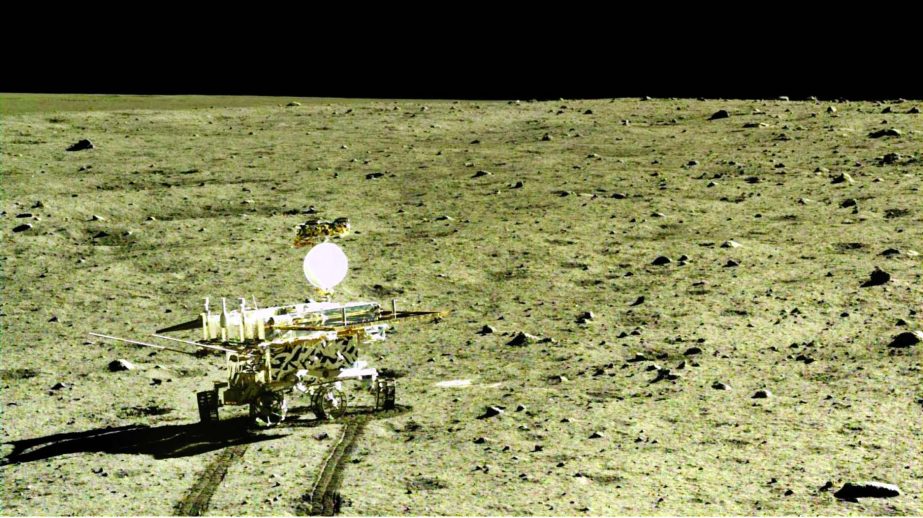
Pittsburg Post-Gazette :
The Chinese Yutu rover has identified a new type of moon rock, according to a study published Tuesday in Nature Communications. The rover – which was the first explorer to land on the moon since the 1970s, if you don’t count orbiters that made crash landings – is poking around a region that’s been reshaped by volcanic activity relatively recently. At just under 3 billion years old, these slightly-less-ancient flows have rock unlike the samples brought home by previous missions.
The moon is generally thought to have formed when a Mars-sized planet (sometimes called Theia) collided with a young Earth about 4.5 billion years ago, creating a hot mess of molten rock. Around 500 million years later, building heat from the decay of radioactive elements inside the moon caused melting in the mantle and led to volcanic eruptions.
Until now, basalts sampled from the moon all had either very low or very high titanium content. By examining young rocks uncovered by an impact crater, Yutu (Jade Rabbit) found basalts with intermediate levels of titanium and high iron levels. That’s important, because the order and composition of minerals in basalt can reveal the source of the magma that formed it.
“The variable titanium distribution on the lunar surface suggests that the Moon’s interior was not homogenized,” Washington University’s Bradley L. Jolliff, who collaborated with Chinese scientists to analyze the rover’s data, said in a statement. “We’re still trying to figure out exactly how this happened. Possibly there were big impacts during the magma ocean stage that disrupted the mantle’s formation.”
In addition to showing the unexpected diversity of the moon, the results could help scientists do a better job of studying its surface from orbiters.
“We now have ‘ground truth’ for our remote sensing, a well-characterized sample in a key location,” Mr. Jolliff said. “We see the same signal from orbit in other places, so we now know that those other places probably have similar basalts.”
The Yutu rover, which landed in 2013, has been immobile since early 2014. But the rover still collects data, making it the world’s longest reigning robot.
The Chinese Yutu rover has identified a new type of moon rock, according to a study published Tuesday in Nature Communications. The rover – which was the first explorer to land on the moon since the 1970s, if you don’t count orbiters that made crash landings – is poking around a region that’s been reshaped by volcanic activity relatively recently. At just under 3 billion years old, these slightly-less-ancient flows have rock unlike the samples brought home by previous missions.
The moon is generally thought to have formed when a Mars-sized planet (sometimes called Theia) collided with a young Earth about 4.5 billion years ago, creating a hot mess of molten rock. Around 500 million years later, building heat from the decay of radioactive elements inside the moon caused melting in the mantle and led to volcanic eruptions.
Until now, basalts sampled from the moon all had either very low or very high titanium content. By examining young rocks uncovered by an impact crater, Yutu (Jade Rabbit) found basalts with intermediate levels of titanium and high iron levels. That’s important, because the order and composition of minerals in basalt can reveal the source of the magma that formed it.
“The variable titanium distribution on the lunar surface suggests that the Moon’s interior was not homogenized,” Washington University’s Bradley L. Jolliff, who collaborated with Chinese scientists to analyze the rover’s data, said in a statement. “We’re still trying to figure out exactly how this happened. Possibly there were big impacts during the magma ocean stage that disrupted the mantle’s formation.”
In addition to showing the unexpected diversity of the moon, the results could help scientists do a better job of studying its surface from orbiters.
“We now have ‘ground truth’ for our remote sensing, a well-characterized sample in a key location,” Mr. Jolliff said. “We see the same signal from orbit in other places, so we now know that those other places probably have similar basalts.”
The Yutu rover, which landed in 2013, has been immobile since early 2014. But the rover still collects data, making it the world’s longest reigning robot.

